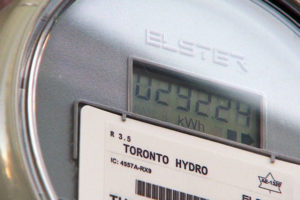- Ontario’s Home Renovation Savings Program excludes net metering, meaning homeowners won’t receive credits for excess energy sent back to the grid, limiting potential cost savings.
- The program incentivizes on-site energy consumption, which benefits homeowners with high daytime usage or battery storage, but may not be as advantageous for others.
- Industry professionals worry that the lack of net metering could hinder broader solar adoption and weaken the program’s contribution to Ontario’s decarbonization goals.
The introduction of new solar rebates in Ontario as part of the Home Renovation Savings Program, under the Save on Energy initiative, has ignited critical discourse within the industry. While the program offers up to $5,000 for solar panel installations and an additional $5,000 for battery storage systems, its exclusion of net metering provisions presents both technical and economic implications that merit a deeper analysis.
Industry professionals are now scrutinizing the program’s potential to drive meaningful decarbonization and whether its design aligns with Ontario’s long-term sustainability goals.
The Core Issue: Load Displacement vs. Net Metering

Toronto Hydro electricity meter. (CTV News)
The program mandates that rebate-eligible systems be used exclusively for load displacement, requiring real-time, on-site consumption of solar or battery-generated power.
Any surplus energy exported to the grid yields no financial compensation, diverging sharply from Ontario’s established net metering framework where excess generation offsets hydro bills, providing tangible economic benefits to system owners.
Quantitatively, this policy shift is significant.
Net metering typically enables residential solar users to offset up to 60-80% of their annual electricity costs, depending on system size and energy usage patterns. By eliminating this feature, the program may inadvertently reduce the return on investment (ROI) for solar adopters, particularly those with variable or low daytime energy consumption profiles.
Infrastructure Implications and Policy Intent
The program’s emphasis on load displacement suggests a strategic pivot toward Distributed Energy Resources (DERs) that prioritize localized generation and consumption.
This approach aims to mitigate the strain on Ontario’s grid infrastructure, deferring costly upgrades amidst rising electrification demands. Data from the Independent Electricity System Operator (IESO) indicates that distributed generation can reduce peak demand pressures by up to 15%, offering a compelling case for this localized strategy.
However, from a broader policy perspective, the exclusion of net metering raises concerns.
Larger solar installations, which could substantially contribute to provincial decarbonization targets, may be economically unviable without net metering incentives. This could stifle growth in the residential and small business solar sectors, limiting the province’s progress toward its solar energy goals outlined in the 2022 Ontario Energy Report.
Design Considerations for Professionals

Rooftop solar installation in the GTA by Brightworks Energy (Image provided by Brightworks Energy)
For consultants and system designers, this policy shift necessitates a nuanced approach to system optimization.
Traditional models focused on annual energy offset must be recalibrated to prioritize real-time consumption. This requires leveraging interval data from utilities, which captures energy usage in 15-minute increments, to design systems that align with clients’ specific consumption patterns.
Consider a residential scenario: data shows that the average Ontario household consumes 65% of its energy during evening hours, when solar production is minimal. Without battery storage—which can cost upwards of $10,000 even with rebates—these households would see limited financial benefits from solar installations under the new program.
Conversely, commercial clients with consistent daytime loads (e.g., offices, retail spaces) stand to gain more from load displacement strategies, potentially offsetting 40-50% of their peak demand charges.
The Path Forward
The industry’s response to the absence of net metering has been one of cautious optimism.
While the current program structure presents challenges, there remains potential for future iterations to incorporate more comprehensive incentives that balance grid management with economic viability for consumers. Industry stakeholders must continue to advocate for policies that integrate both load displacement and net metering to foster a robust and resilient solar energy ecosystem.
In the interim, professionals are tasked with educating clients, adapting system designs to meet the program’s criteria, and leveraging data-driven insights to maximize the value of solar energy investments. As Ontario navigates its energy transition, a collaborative approach between policymakers, industry experts, and consumers will be crucial in shaping programs that effectively advance the province’s sustainability objective
















Comments